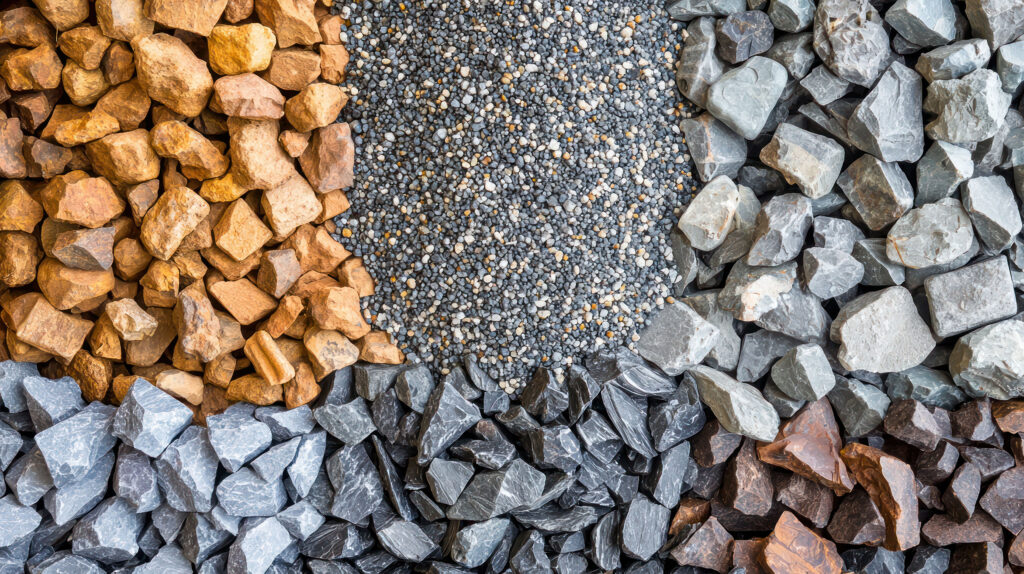Polished concrete can duplicate the look of much more expensive floor types at a fraction of the cost. Using just the fine concrete at the top of a finished foundation, a skilled polisher can create an appearance that mimics marble or stone. With quality aggregates, the polisher also has options to polish deeper into the foundation and create a terrazzo floor that looks like the type of architectural flooring found in ancient Greece or Rome. For a better understanding of these types of polished concrete floors, let’s talk about aggregates and the types commonly used for high quality polished floors.
Aggregate — A Critical Concrete Component
All concrete requires aggregates for durability and strength. Cement powder agglutinates around the aggregates during the curing process, lending interior structure to the concrete. Materials for aggregates can be as varied and tiny as sand or as large as stones and recycled pieces of concrete. Ordinarily, the aggregates are never seen, hidden underneath the top layer of finished cement that generally includes some sand covered by wet cement. During the finishing process, this top layer can be washed or brushed away to reveal the aggregates, but then the finished surface is rough and pebbly. Revealing the aggregates after the concrete has dried by grinding away the upper surface creates a smooth floor that also features the beauty of the aggregates. Therefore, with terrazzo and other forms of deep polished concrete, the quality and color of the aggregates is very important.
Color, Size, Shape, Consistency
Obviously, to use certain aggregates they must first be part of the concrete mix. California Custom Coatings can help you plan your concrete floors by consulting in advance regarding the results obtained with certain types of stones, rocks, and materials. Your chosen aggregates are then included in the concrete mix created by the contractor pouring your concrete. Color can also be added during the mixing stage, so that the surrounding concrete is not just the standard grey.
Some of the most popular aggregates for polished floors are chunks of marble or granite. The former lends color and striations to the concrete, while the latter is infused with natural mica and creates a sparkling effect. Like marble, granite can vary in color, depending on its source. Manufactured glass pebbles also create a fascinating effect, with a rainbow of color options.
Natural aggregates are available in all the forms of stone provided by planet Earth. River rocks, pebbles, gravel, in all sorts of colors and sizes, sorted or combined in different patterns, can create an aggregate mix that matches any design plan, from solid white, to solid black, to beautiful natural hues. The key is finding the right concrete and polishing team to provide you with the custom floors you want. California Custom Coatings is ready to be part of that team!
In a future article, we will discuss the types of polished concrete floors we can produce, based on the depth of the grinding process. To start your polished concrete installation, for either new concrete pours or concrete renovations, contact California Custom Coatings. We can help with planning for new pours, or testing to determine if a concrete floor is suitable for polishing. For more information, contact us by phone or online today!
